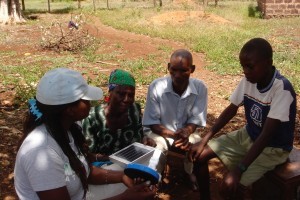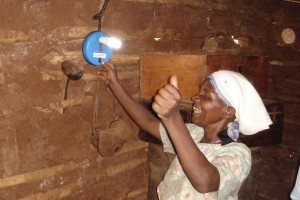Solar Lighting for African Homes

Sustainable Lighting for Orphans and Grandmothers
Keywords: Sustainable economies, Solar energy
Description
A Lesson in Project Development
In 2008, a group Rotarians and Friends of Rotary from District 7070 were in the 3rd year of a community develop project in the Kilema Region of Tanzania. Many areas of the community do not have electricity. The solar lights were a pilot project with HIV/AIDs orphans and their primary care givers, their grandmothers. Grandmothers with school age students were selected from the community to receive a solar panel and light. The idea was to assist the students in the studies after dark. Tanzania is on the equator and the sun sets around 6:00 pm every evening. The initial installation went well. The solar panels are small and portable allowing them to be safely stored away. Many of the participants had never used a switch before and they were very excited to “flip” the switch and see their very dark, mud and stick, homes illuminated for the first time. Over a 2-week period about 20 panels and lights were installed. All looked to be going well. The lights were working well. Everything was not as it seemed. We soon began to get reports about missing panels and lights. The project had targeted people who we, the visiting Rotarians considered most in need. What had been missed was the cultural, and social implications of giving poorest people in a community a unique and valuable asset. Upon quiet investigation by local care workers it was found that most of the panels and lights had moved to other homes in the community. The project had not considered the whole community and its social dynamics and power structure. It was a valuable lesson. Over the next 2 years we withdrew from project design in the community and handed over the responsibility to a committee of local leaders. They assessed the needs of the community as whole and developed a vision for their community development. From this they determined the projects based on the social, economic and environmental reality in their community. We helped them to find the resources and funding needed to implement the projects. The commitment of the community and the overall sustainability of the projects were greatly enhanced

